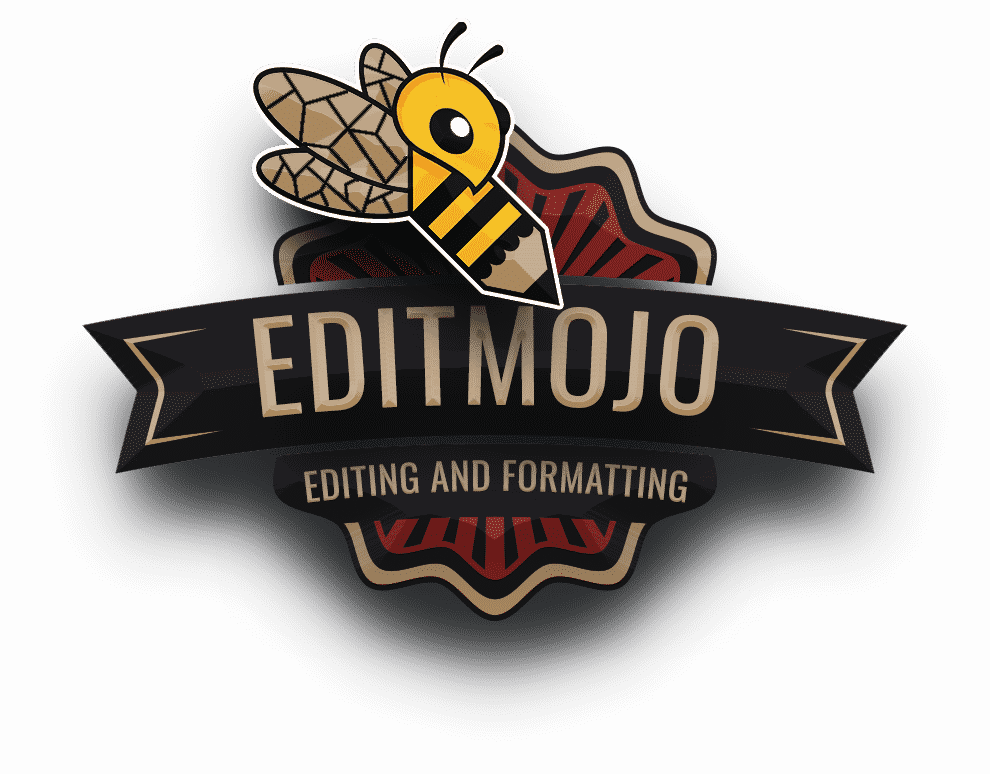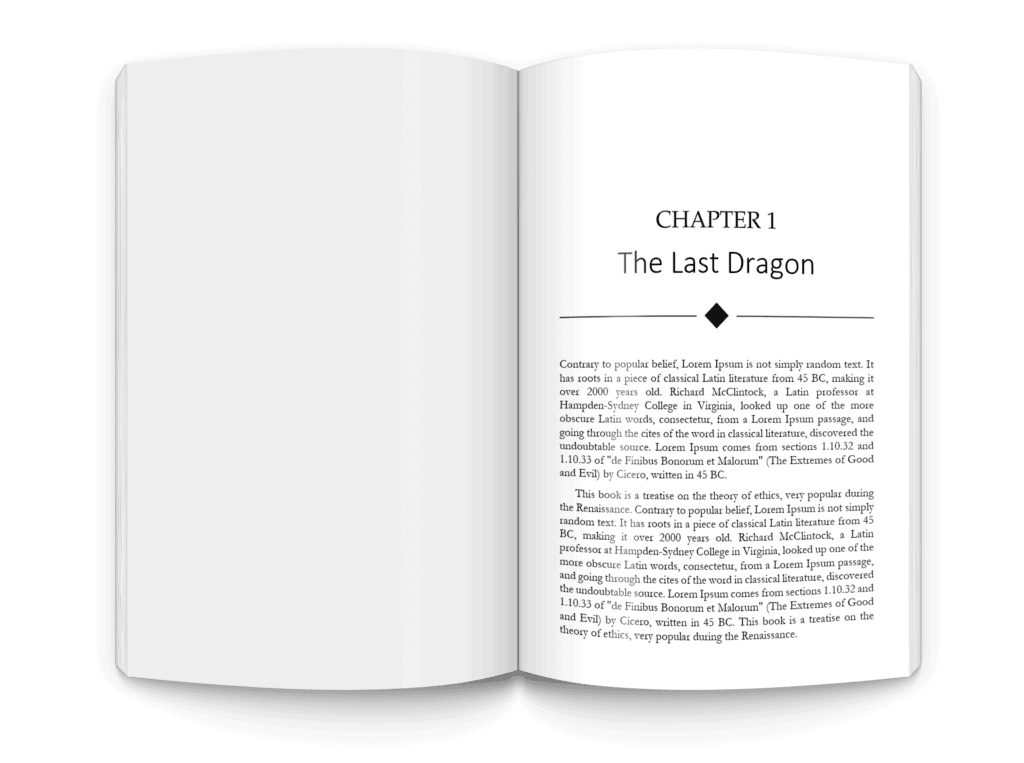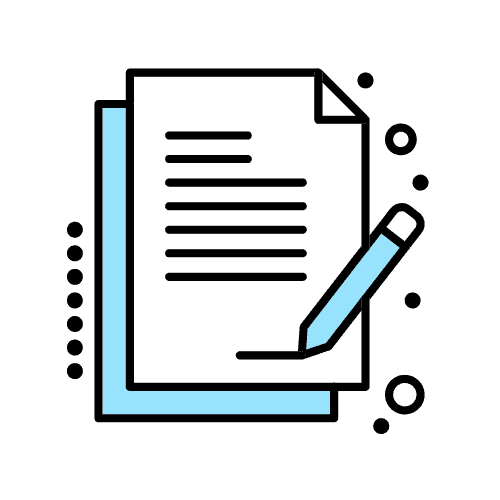
Welcome to Editmojo!
Book Editing and Formatting
WHY EDITMOJO?
We Don’t Rush Our Editing
At Editmojo, we understand the importance of each word, so we don’t just breeze through the editing process. Instead, we delve deep into your story’s structure, giving each sentence and paragraph our full attention and ensuring a quality edit.
Writing a book and getting it published can be a stressful process; let us make it as smooth as possible with thoughtful and thorough editing services that ensure its success. No rush job here; each manuscript receives our fullest attention to make its mark on readers.
Picking us means choosing a partner who cares more about quality than speed. We specialize in making your story shine while still honoring its unique voice – so when your book hits shelves, not only is it error-free, it becomes a true masterpiece!
Rushing the process may seem tempting for an author, but allowing an editor to take their time will help your book shine more beautifully.
Average Turnaround (custom requests are accepted)
| <5K words | Three days |
| 5K to 10K words | Five days |
| 10K to 20K words | Ten days |
| 20K to 40K words | Fifteen days |
| 40K to 60K words | Twenty days |
| 60K to 80K words | Twenty-five days |
| 80K to 100K words | Thirty days |
| >100K words | Custom |
We Provide Two Read-Throughs With Our Heavy Line Editing Service
Editmojo’s Signature Heavy Line Edit is like giving your manuscript a double dose of TLC.
Here’s the deal: We don’t just skim through your work once. We go through it twice, which is a real game-changer for those intricate stories needing extra love.
Round One – The Deep Dive: First up, we dive headfirst into your manuscript, paying attention to every little detail. Our goal? To make everything read smoothly while keeping your unique style alive. We’re talking grammar, consistency, style – the works. It’s all about laying a solid foundation for an even more thorough check.
Round Two – The Fine-Tuning: The second round is where we get nitpicky, in a good way. With the basics nailed down, we shift our focus to polishing the language, tightening up the story, and nailing the tone.
What You Get: Imagine your manuscript getting pampered not once, but twice. The result is a piece that’s not just free from errors, but also sparkles with great storytelling and expression. It’s a perfect fit for those complex pieces that need an extra sprinkle of detail-oriented care.
We Only Edit Books
At Editmojo, our world revolves around books, and we’re downright passionate about editing them. Every manuscript that comes our way is treated as a potential masterpiece, because we’re not just editors – we’re devoted book lovers. Our team, a close-knit group of grammar whizzes and avid readers, doesn’t stop at correcting typos. We immerse ourselves in your story, adding that extra bit of sparkle to make it shine.
Our expertise isn’t limited to one genre. Whether it’s a captivating novel or a thought-provoking non-fiction piece, we adapt our skills to meet the unique demands of each book. This tailored approach ensures that your work gets the personalized attention it deserves.
Being exclusively focused on books keeps us constantly in tune with the latest trends and techniques in the literary world. This deep understanding and dedication mean that when you choose Editmojo, you’re opting for a team that not only excels at book editing but also cares deeply about crafting and refining your story with the utmost passion and insight.
Benefits of a Small Team
Why go with Editmojo’s small team, you ask? Here’s the scoop:
We’re a cozy duo of editors right here in Lancaster, PA. Being small isn’t just cool, it’s our superpower. It means we can offer something special to our clients.
Let’s talk personal touch. We don’t just work on any book; we dive into your story, getting the full picture of what you’re dreaming up. To us, every book is a labor of love, not just another job.
Consistency is key. With just two of us, you get the same quality and communication throughout. Your dedicated editor will be with you every step of the way, making sure your book’s voice stays true from the first page to the last.
Need a quick pivot? No problem. Our small size makes us super adaptable, which is pretty handy in the ever-changing world of book publishing.
It’s all about relationships. We’re big on getting to know you and your work, creating a bond that lets us tailor our editing to suit your style and needs perfectly.
And here’s our philosophy: quality trumps quantity. We pick projects that excite us and pour our hearts into them. It’s not about how many books we do, but how well we do them. Your book gets the care and precision it deserves.
Unlimited Revisions
(To Our Edits and Notes)
Editmojo’s Unlimited Revisions: Polishing Your Manuscript Just Right
Always Improving: We don’t just stop after the first round of edits. At Editmojo, we offer as many revisions as you need. We’re committed to making sure you’re totally happy with every part of your book.
Unlimited Revisions Do Not Include New Content: Our unlimited revisions are for our edits and notes and to improve what’s already in your manuscript. We focus on polishing what you’ve written, not new writing or additions.
Working Together: This is a team effort! We like to keep the lines of communication open, so your feedback is always welcome. This helps us make each revision better and closer to what you envision for your book.
Using the Change Tracker: We must keep track of all changes and notes. If you don’t use Microsoft Word, don’t worry – we can help you use free tools like Google Docs or Open Office. This way, we can all easily track the changes being made.
You Get a Blanket NDA Working With Us
Your Privacy Matters: At Editmojo, we really care about keeping your work private and safe. That’s why we have a blanket NDA attached to all invoices to make sure everything stays confidential. This means that whatever you share with us – your manuscript, ideas, and discussions – will only be between you and our team.
You Own Your Work: When you give us your manuscript to edit, you still own it completely. After we’re done editing, you keep all the rights to your work. We’re here to help make your work better, but it’s still your creation.
Author Resources
We do more than just polish your manuscript – we’re here to boost your entire publishing journey.
Think of us as your co-pilot in getting your book out there. Whether you’re going down the traditional publishing route or diving into self-publishing, we’ve got some neat resources tailored just for you.
Dreaming of getting your book on shelves with a big publisher? After we’ve worked our editing magic, we don’t just wave goodbye. We hook you up with a list of literary agents and publishers, complete with their contact info. It’s like a treasure map to the right people who can help your book reach the stars, saving you heaps of research time.
And for the go-getters heading into self-publishing, especially on Amazon, we’re here to make your life easier. We’ll help with Amazon SEO keywords and finding those sweet spots – the low-competition categories. These are your secret weapons for making your book pop on Amazon. We aim to get your book noticed and picked by readers by playing the Amazon game smartly with the right keywords and categories.
Editmojo Reviews
Discover top-notch book editing with Editmojo! Don’t just take our word for it – see the positive feedback we’ve gotten. Check out the experiences of our satisfied clients and learn about their success with us. Many authors, just like you, have benefited from our dedicated support.
Our track record of success and glowing reviews show our dedication to quality book editing.
Trust us with your book and expect great results. Ready to hear more? Dive into our testimonials and see the praise for Editmojo. Contact us and join the excitement!
Satisfaction Guarantee
We’ve got a rock-solid promise for you: We’ll do whatever it takes to make sure your project turns out just how you imagined. We’re not just about delivering a service; your satisfaction is what we’re aiming for, every single time.
Here’s how we roll: We get that every author’s dream for their book is unique. So, we’re all about teaming up with you to make that dream come true. Our satisfaction guarantee is all about tuning into what you want, what you’re thinking, and how you’re feeling about the work. We bring our A-game in editing and formatting, all while making sure it’s tailored just for you.
And, if something’s not quite hitting the mark, no sweat. We’re ready to roll up our sleeves and dive back in. We’ll tweak, adjust, and refine until the final piece sounds like you, feels like you, and gets a big thumbs-up from you. That’s our Editmojo promise!
Copyediting $10 per 1K words
Editmojo’s Copyediting: Affordable Quality for Every Author
We offer a meticulous copyediting service at just $10 per 1,000 words, combining quality with affordability. This service focuses on crucial sentence-level editing, addressing spelling, grammar, punctuation, and syntax to enhance readability and clarity. It’s an ideal choice for authors seeking professional editing on a budget. We aim to free your manuscript from common language errors, making it engaging and polished. Whether you’re a first-time author or a seasoned writer, Editmojo’s copyediting provides an effective, economical solution to elevate your manuscript’s professionalism.
Line Editing $20 per 1K Words
Enhance Your Manuscript with Editmojo’s Line Editing
Our line editing service, priced at $20 per 1,000 words, offers an in-depth refinement of your manuscript. Going beyond basic copyediting, it focuses on improving sentence-level flow and clarity. Our editors meticulously enhance readability, coherence, and the overall impact of your prose, addressing both technical and stylistic elements. This service is perfect for authors seeking a deeper edit to elevate their writing’s effectiveness and engagement, ensuring that every sentence resonates with their intended audience.
Heavy Line Editing $40 per 1K Words
Deep and Detailed: Editmojo’s Heavy Line Edit Service
For manuscripts requiring extra attention, Editmojo offers a heavy line edit service at $40 per 1,000 words. This premium service includes two read-throughs, making it ideal for challenging content or works that need additional polish. Our first read-through focuses on intensive line editing for clarity, flow, and style. The second pass allows for finer adjustments, ensuring every aspect of your manuscript is honed to perfection. This service is especially beneficial for authors seeking a more rigorous editing process to elevate their manuscripts to professional standards.
Amazon Book Formatting $5 per 1K Words
Professional Formatting for Amazon and Kindle at Editmojo
We offer efficient and affordable formatting for Amazon Print on Demand and Kindle books at just $5 per 1,000 words. We ensure your manuscript is perfectly tailored to meet the unique specifications of both print and digital formats on Amazon. Our service focuses on optimizing layout, font, and spacing for an engaging reader experience. Ideal for authors seeking to publish on Amazon, our formatting makes your book visually appealing and ready for the competitive marketplace, ensuring a smooth transition from manuscript to published work.

What Does An Editor Do?
A book editor plays a vital role in transforming a manuscript into a polished and publishable work. Their job begins with a thorough evaluation of the manuscript, assessing its structure, style, and alignment with the intended genre and audience. They then engage in line editing, where they meticulously refine each sentence for clarity, readability, and consistency in tone.
This is followed by copyediting, which focuses on correcting grammar, punctuation, spelling, and syntax errors, ensuring the manuscript is free from any linguistic inconsistencies. In the final stages, the editor proofreads the text, catching any minor oversights and ensuring the manuscript is impeccably polished. Beyond these technical aspects, book editors provide valuable feedback and guidance, helping authors enhance their work while maintaining their unique voice.
They also prepare the manuscript for publication, which may involve formatting and coordinating with design teams for the book’s overall presentation. Through this collaborative and detailed process, book editors are instrumental in bringing a manuscript to its full potential, ready to captivate its intended audience.

Hiring a Professional Book Editor
Where Do You Find An Editor?
Finding an editor can seem impossible if you search through the multitudes of results on Google. Editmojo is one of the best book editing companies around.
You can spend hours searching freelance sites for an editor, but it’s best to keep your search narrow.
Ask for recommendations from other writers, especially if they write in the same genre as you. We are obviously a little biased, but we recommend comparing our sample edit with other editors. You’ll want to contact multiple editors to find the best person possible to work with you and your book.

Hone Your Craft
The most important lesson a writer can take to heart is that you can always improve your craft.
One of the best ways to do this is to work with an editor who will advise you on structure, pacing, and word choices to improve your communication skills.
By viewing their advice as an opportunity to learn rather than harsh criticism, you can address the areas that need improvement and use that knowledge to your advantage.
Book Editing and Formatting
Authors can spend days, weeks, or even months trying to edit their work. A common pitfall for writers entering the revision process is getting caught up in research, themes, or structural dilemmas.
You can avoid this lost time and mounting frustration by working with an editor. It may take them a few weeks to work their way through your manuscript, which gives you time to begin working on your next project.
Therefore, a certain amount of book editing needs to be done by you before hiring a professional, which we discussed earlier, but don’t get weighed down by all the little details. Going over your work in-depth is your editor’s job.

Do You Have a Manuscript That Needs Book Editing?
If you have a book ready for the next step in the publishing process, check us out at EditMojo. We’re professional book editors who offer both formatting and book editing with unlimited revisions.
Contact us today for your free sample edit and see how we can turn your draft into a publish-ready book.








